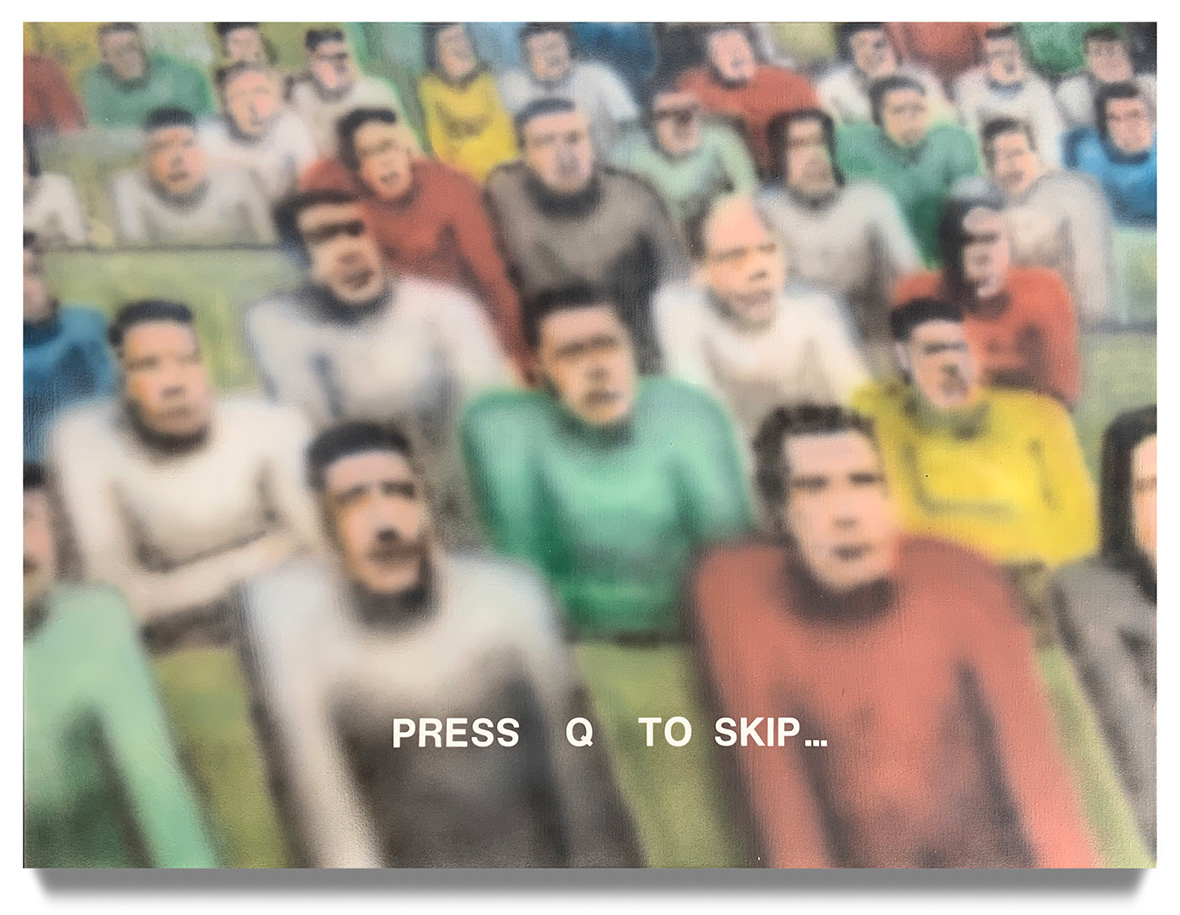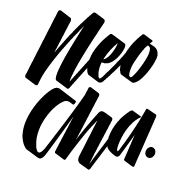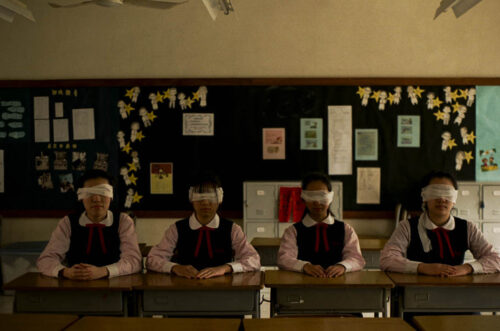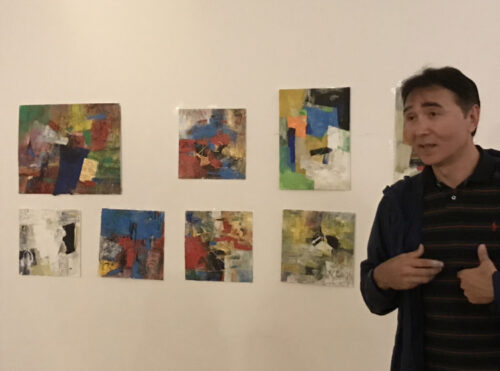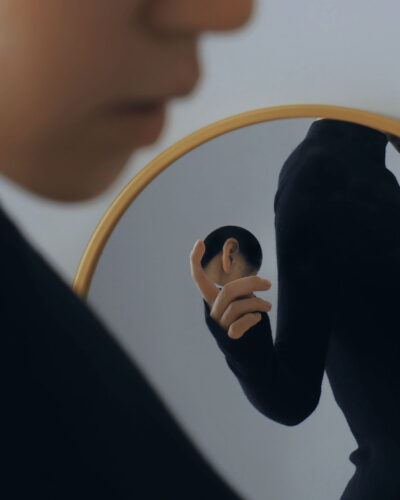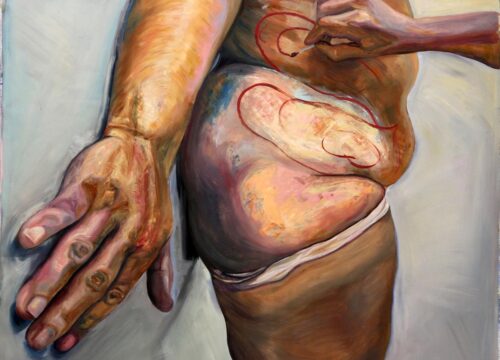This article was originally published on Neocha and is republished with permission.
Low-poly graphics and textures have recently become a trend in the indie video-game scene. Moved by nostalgia and a desire to harness the players’ imaginations, developers have reclaimed the PS1 and N64 aesthetics of the 1990s in a handful of last generation games. But it’s unexpected to see such a style in the fine-arts world.
China news, weekly.
Sign up for The China Project’s weekly newsletter, our free roundup of the most important China stories.
Houston-based Chinese artist Gāo Háng 高航 proudly exhibits his low-poly art on the walls of galleries. In his latest series of paintings, sarcastically titled 21st Century Realism, he reflects on our infotech era and how the fast-paced spread of information affects our social and consumer lives. Contrary to the title, however, his paintings are far from realistic. They mix low-poly style with the mischievous spirit of the internet memes to form a satirical commentary on this generation’s online behavior.
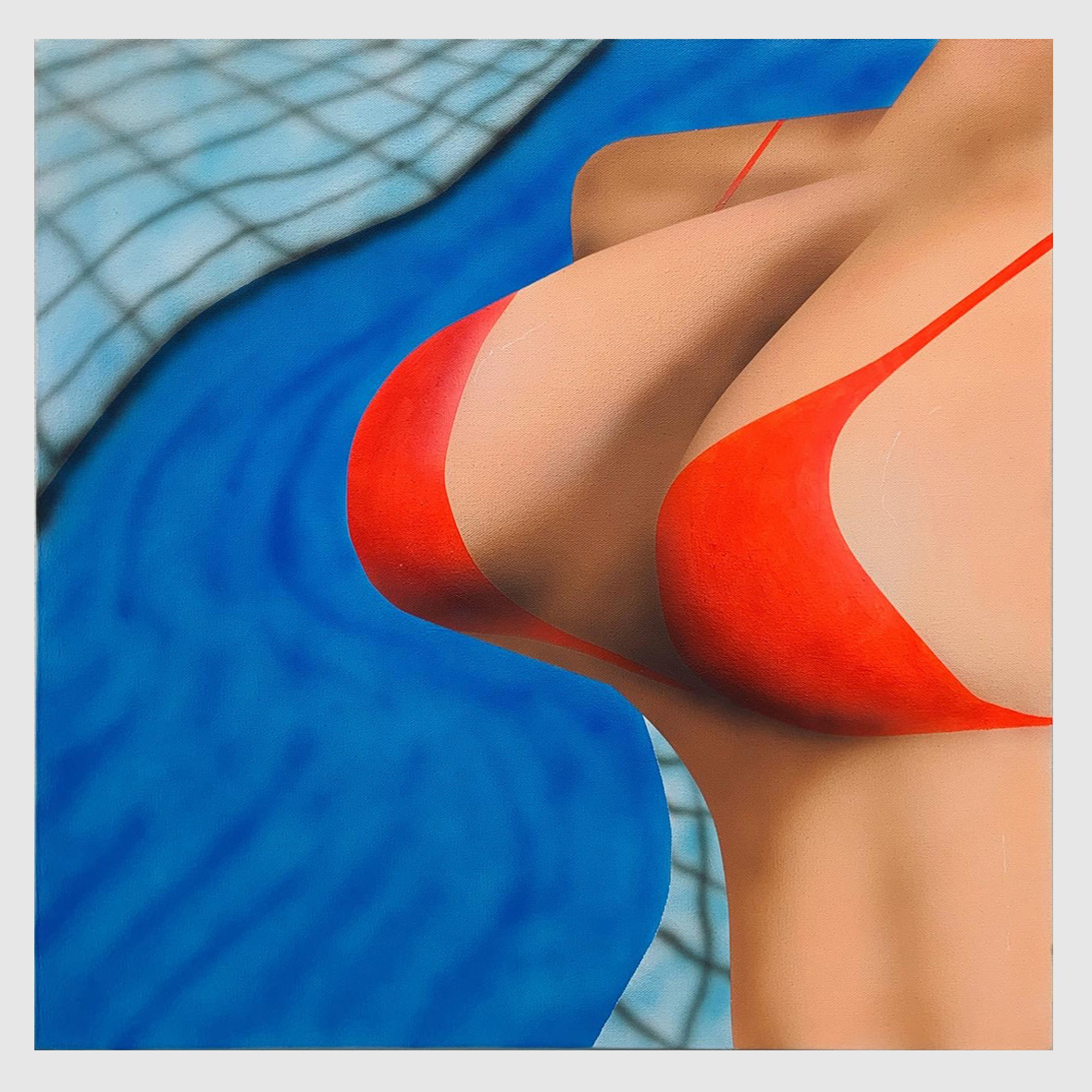

“My creative process has to do with my habits and obsessions,” he says. “I mostly listen to standup comedy while working. I like it when comedy challenges general beliefs and political correctness. In a way, my paintings are like standup comedy, with brutal honesty and humor—powerful qualities in any conversation.”
Gao scours the internet in search of images to reference for his paintings. But he never reproduces them in full. Instead, he prefers reimagining how the image may look from different angles or with a different composition. Finally, he reduces them into primitive polygon shapes and colors, airbrushing the imagery with acrylic paint on canvas.
He’s drawn to visuals that feel awkward and unpolished, as is the case with retro video games. Aiming to recreate the same feeling in his works, he often depicts close-ups of characters holding guns and first-person perspectives. Gao cites classics like GoldenEye 007, for Nintendo 64, and the PC game Counter-Strike 1.4 as inspiration. “I think my fascination [with video games] started in my formative years, and it psychologically shocked me,” he says. “I know we have VR games nowadays, but these old games provided legit immersion back then. Even if we think their graphics were poor, we were more than pleased with them.”
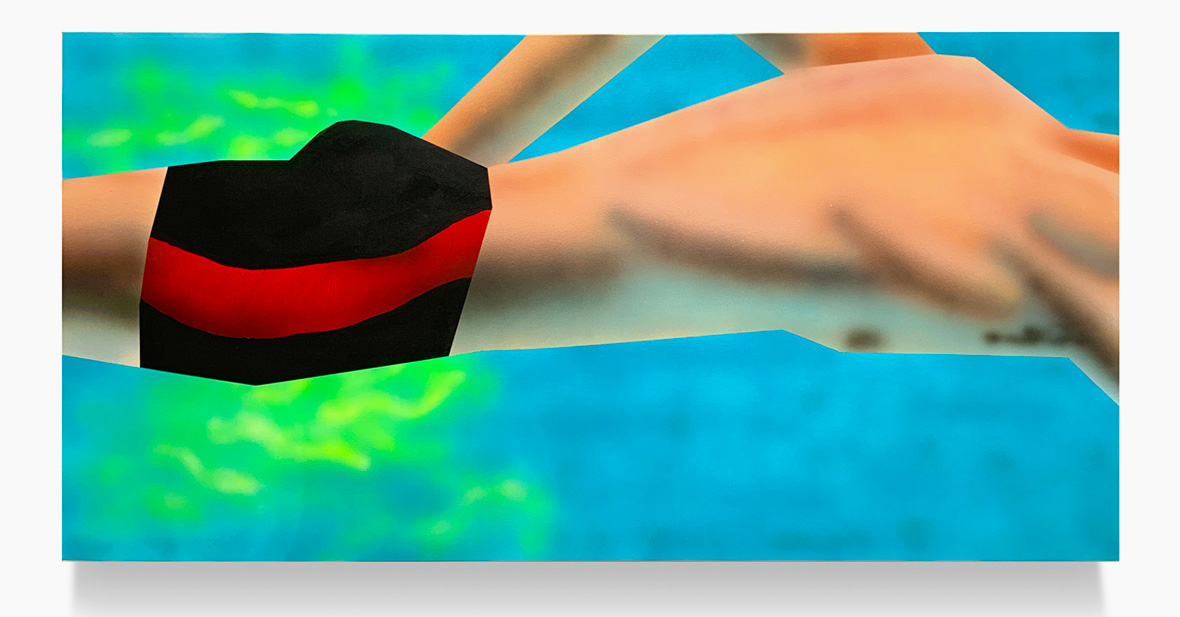
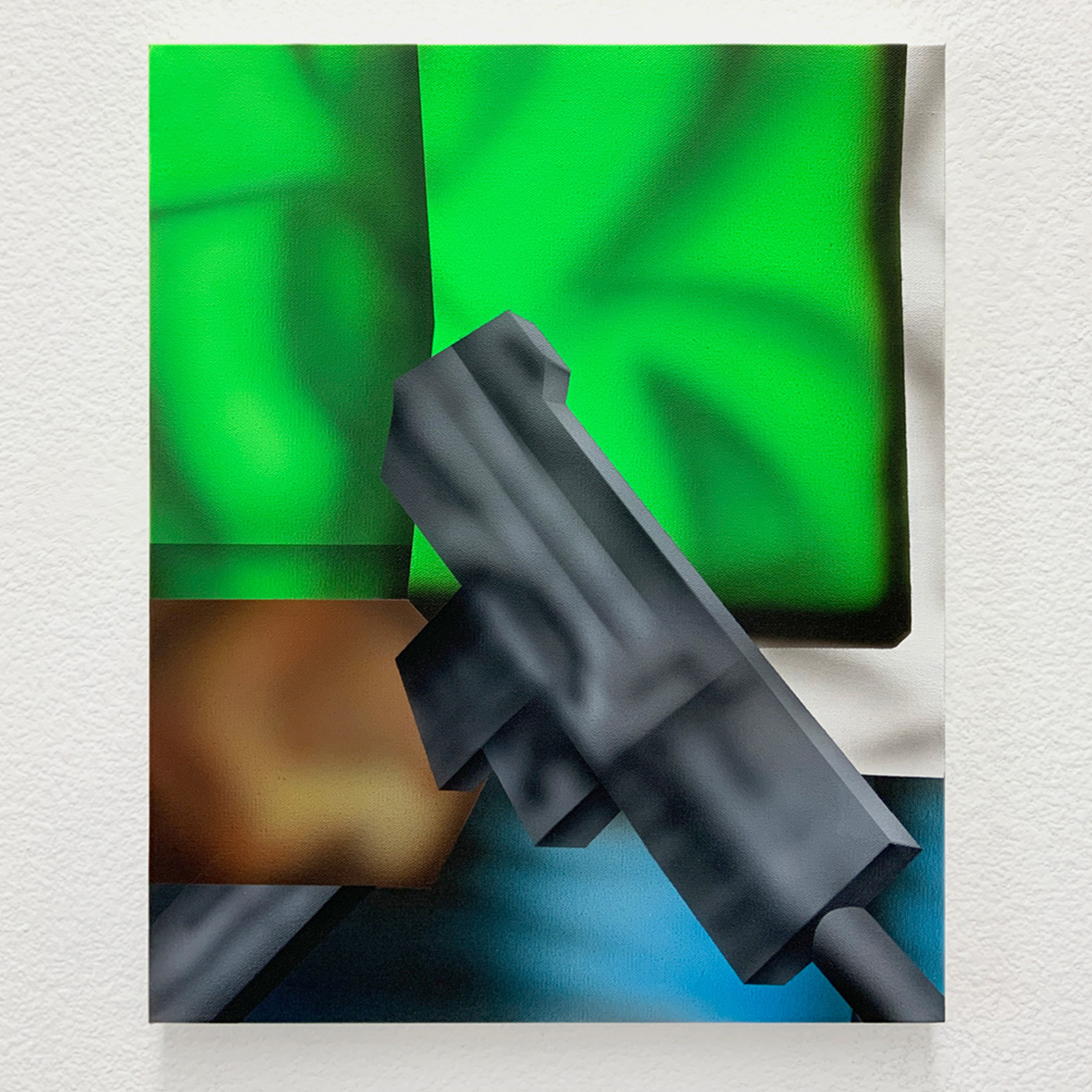
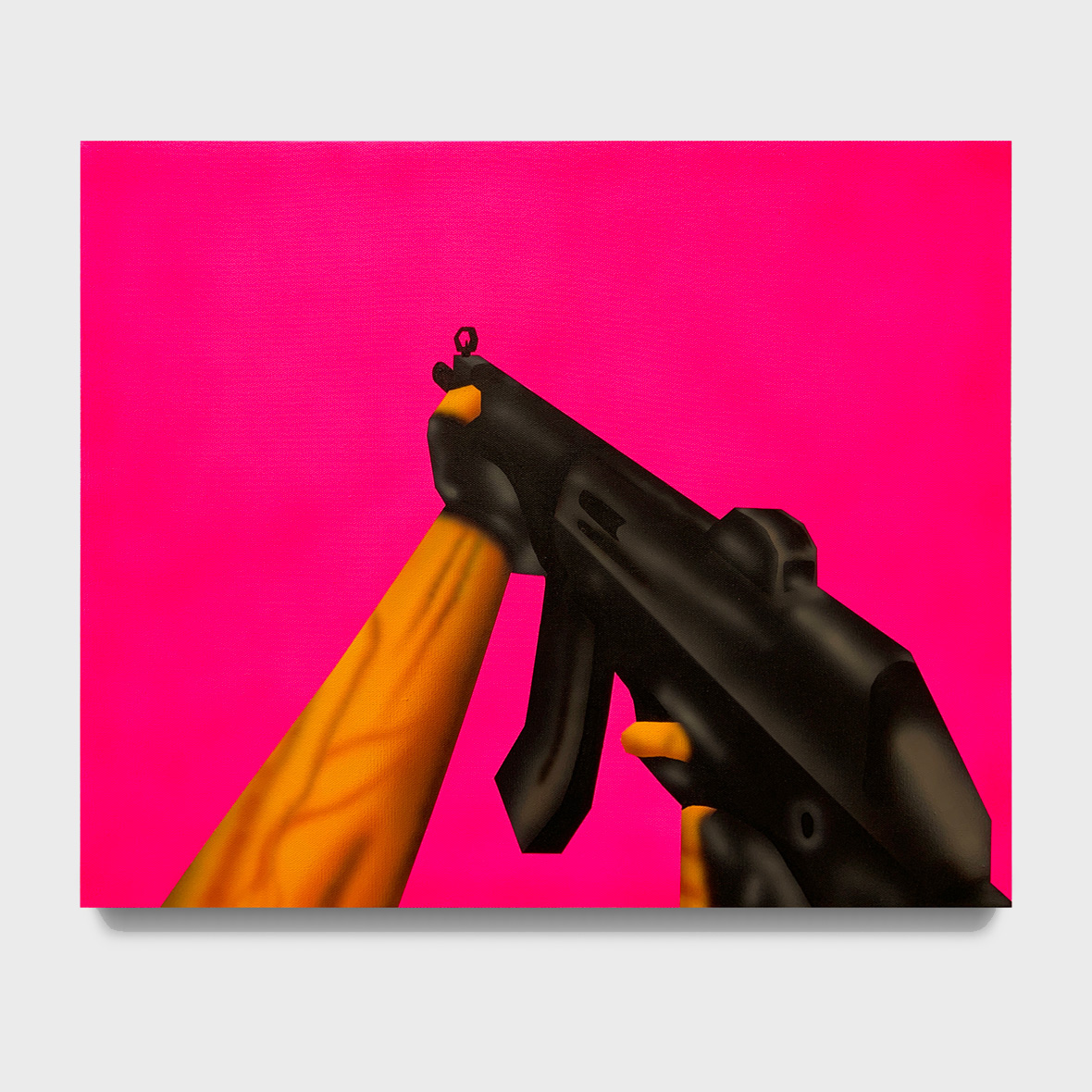
Though he includes recognizable elements in his paintings, Gao describes his works as being his take on color field paintings. He’s interested in the significance of colors, particularly fluorescents because they represent scientific innovation, one that’s enabled an entirely new visual experience in the last century. In his works, fluorescent colors are a metaphor for people’s social media behavior. “If you don’t broadcast yourself, you disappear,” he explains. “We have to be fluorescent, visually aggressive—or just aggressive.” Gao admits he doesn’t like social media, but he’s on it nevertheless. “Otherwise, I don’t exist,” he says.
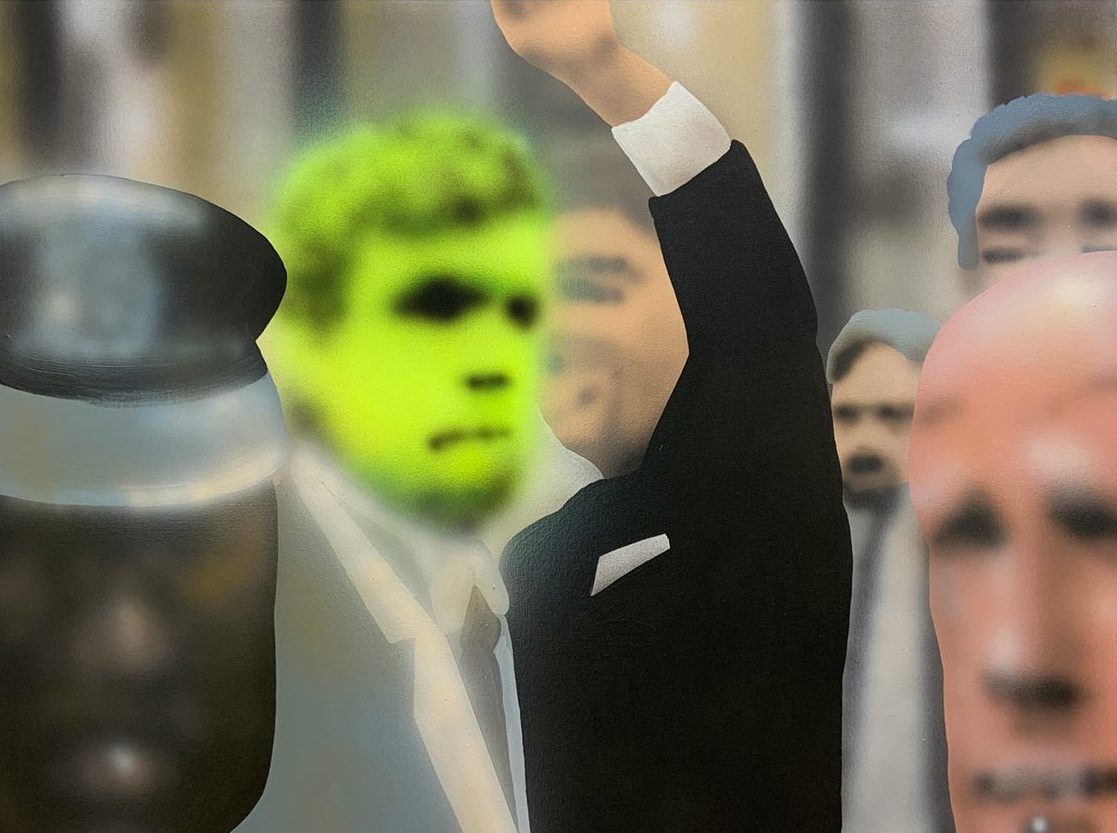
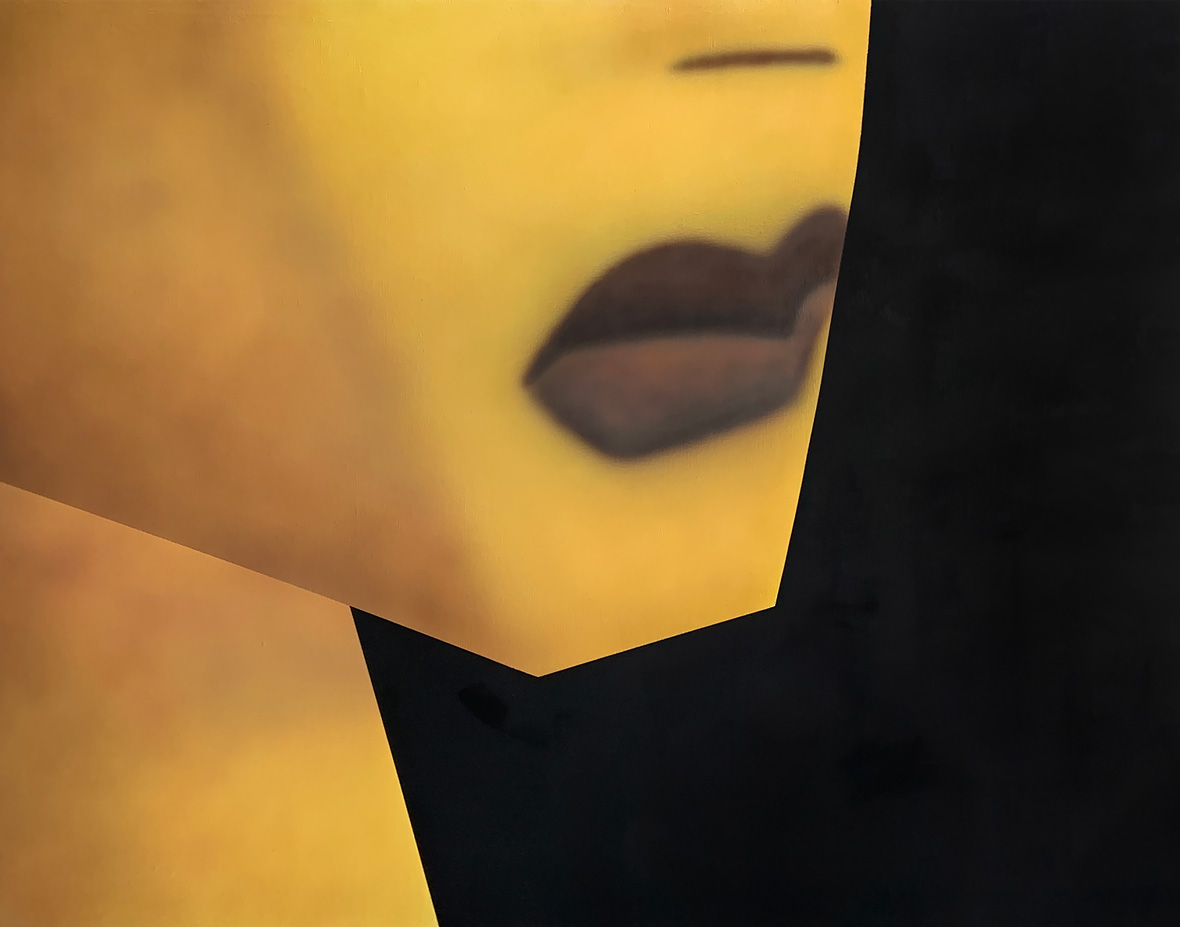
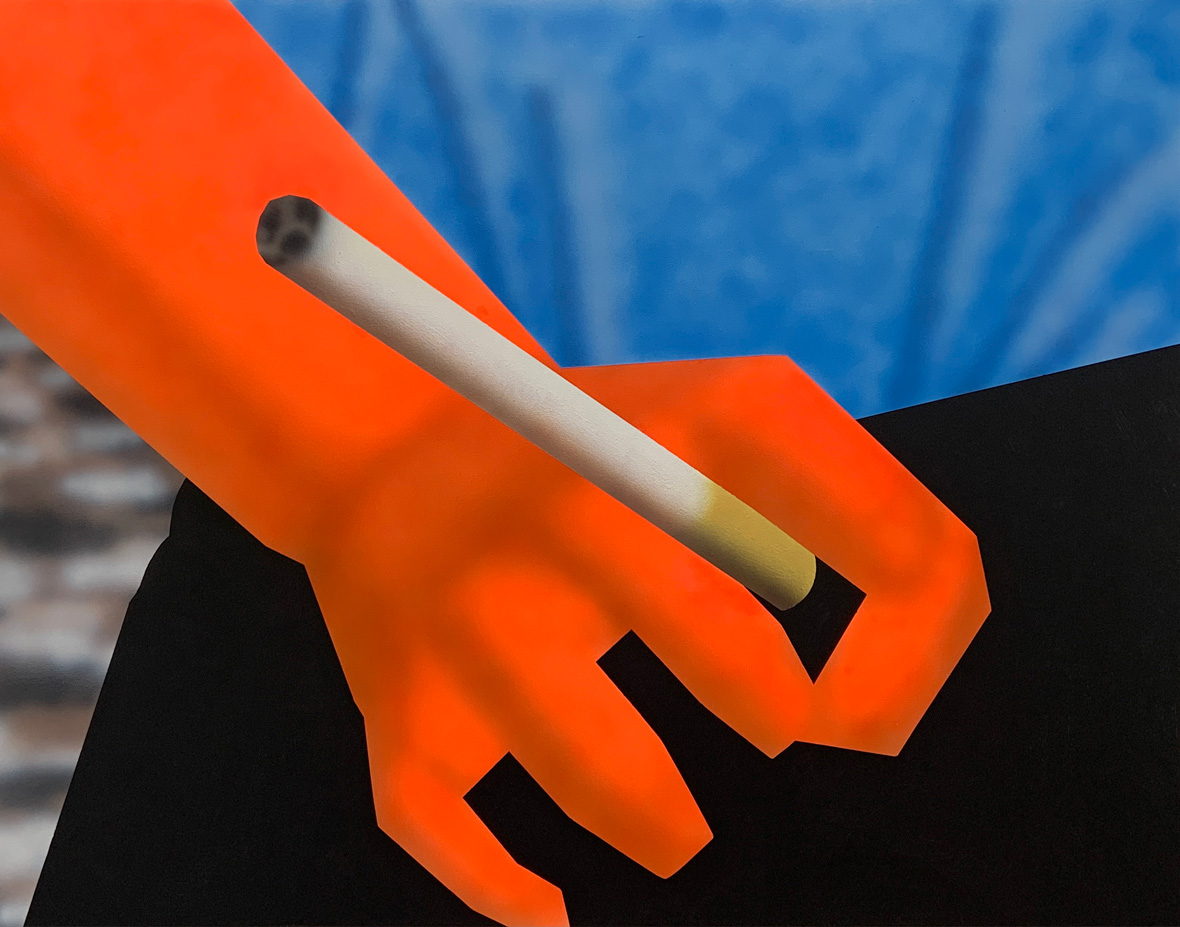
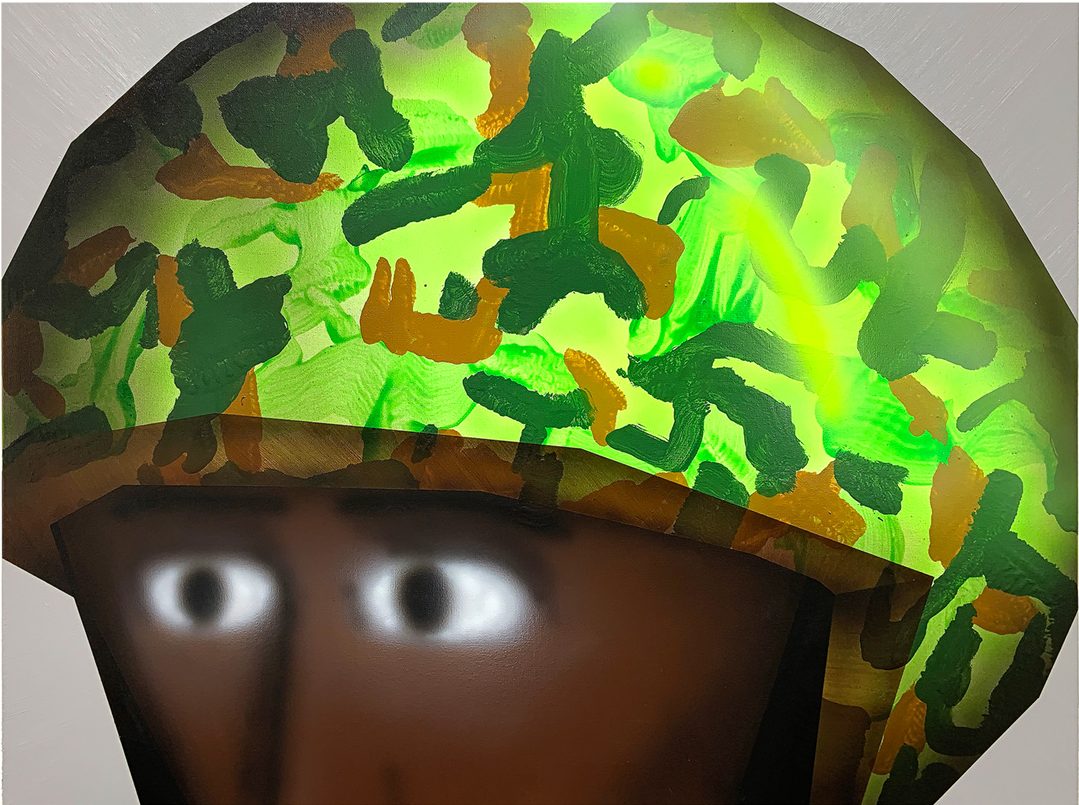
Memes are another ripe source of inspiration for him. Gao admires their irreverence and honesty, but also the fact that they proliferate easily. “Let’s be honest: the idea of copyright is gone. It doesn’t matter anymore—just like the people who made these images don’t matter,” he jokes. But there’s a grain of truth in his saying. Online content is easy to download and reproduce, rendering its creators irrelevant. Memes are, perhaps, the best example of this phenomenon: what matters is that they propagate through the internet, from one user to another, in endless derivatives of the original.
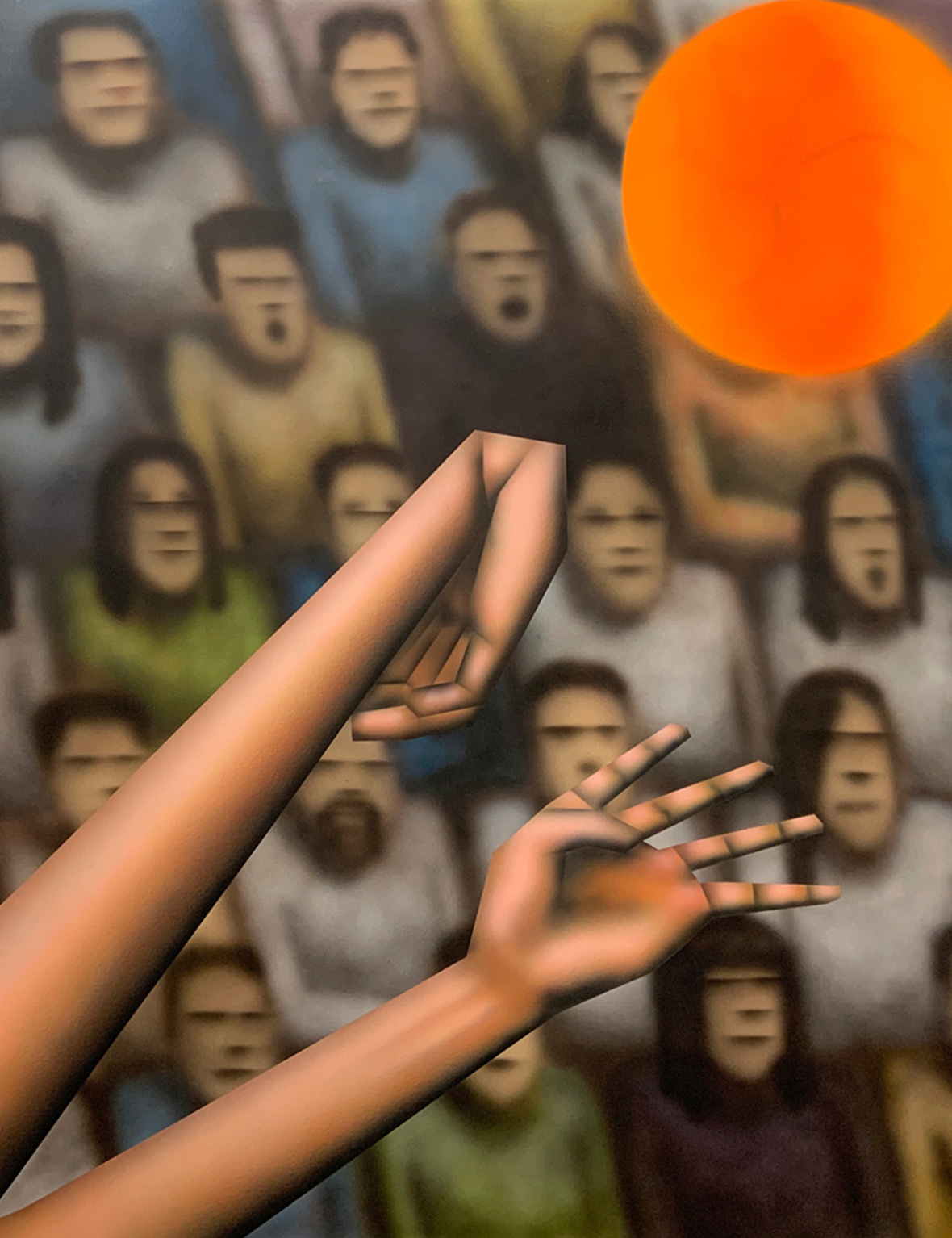
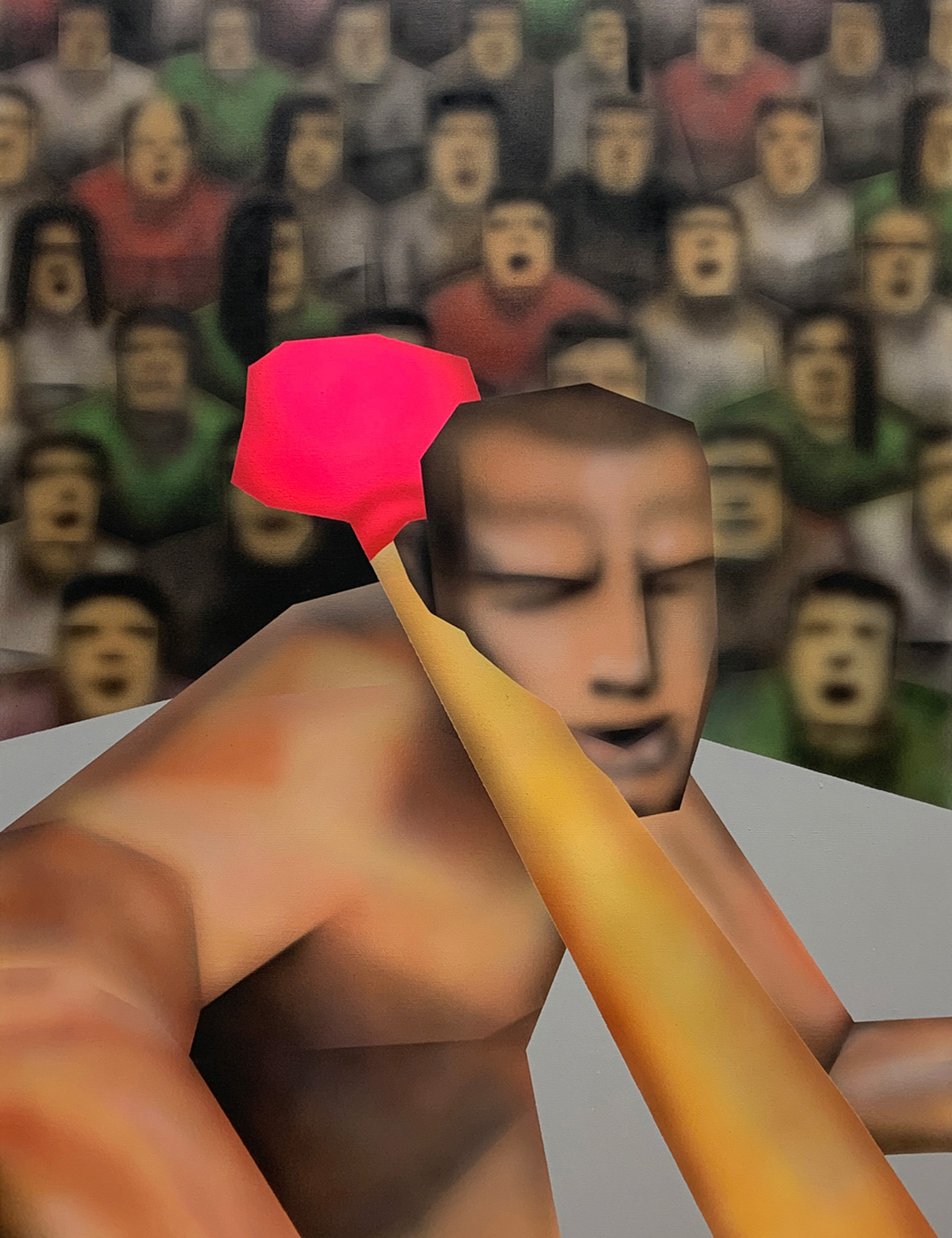
Gao grew up in Baoding, a relatively small Chinese city, in an open-minded household compared to most of his peers. As a child, his parents took him on trips to nearby historical villages so that they could all draw and paint the idyllic scenery. Since then, he hasn’t stopped making art. Gao received his bachelor’s in oil painting from the Capital Normal University in Beijing and his master’s in painting and drawing from the University of Houston. In Beijing, his earlier works were “absolutely dark,” he says, “a dark fairytale ruled by academic realism. Ridiculous. But very honest for a twenty-year-old.”
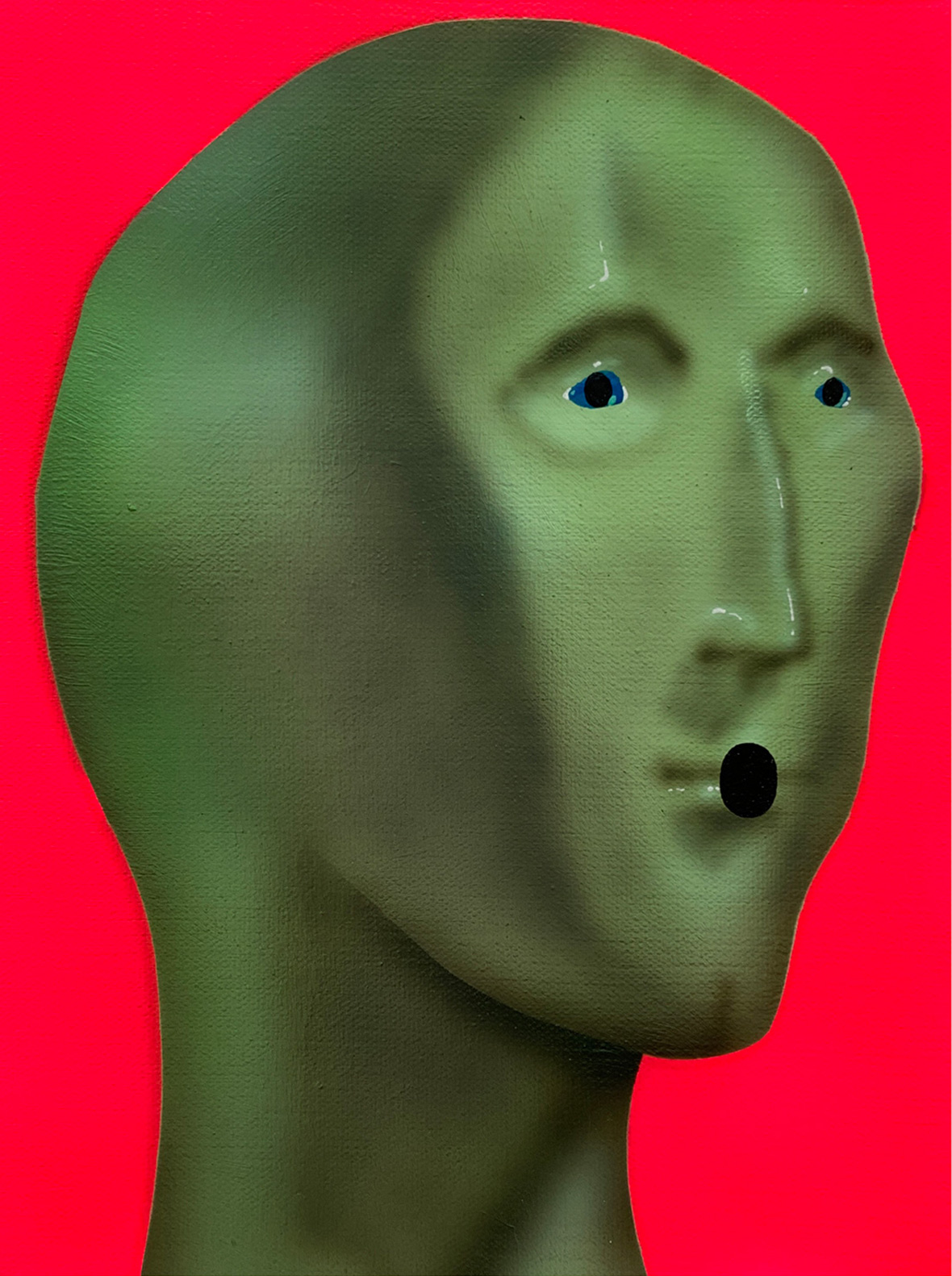
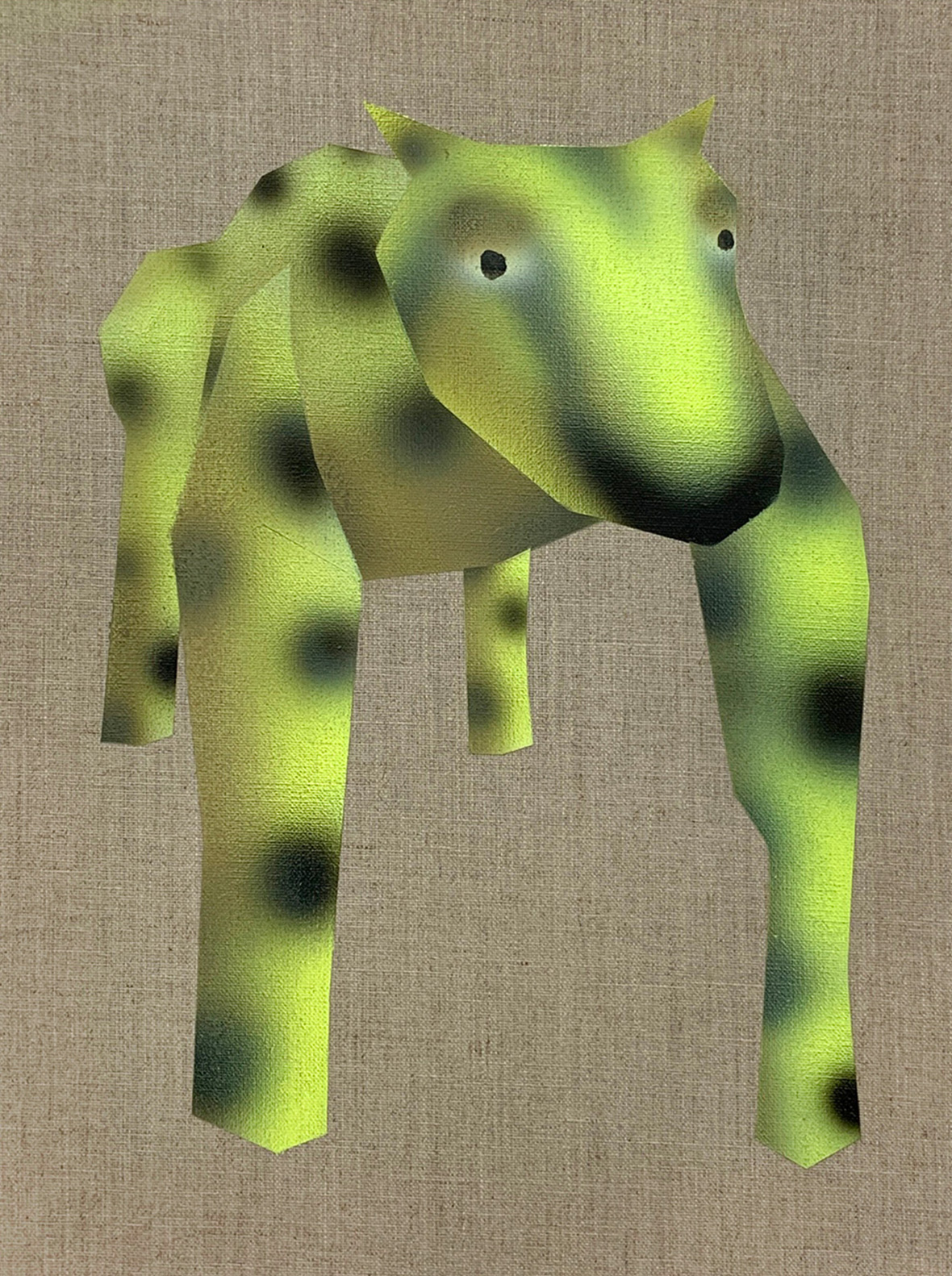
When he moved to the United States, his subject interests and style changed. Suddenly overwhelmed by an endless array of information about art that he could find in the school library he studied the lives of the great artists he admires, such as Andy Warhol, Benjamin Butler, and David Hockney. A more colorful style emerged, together with the appearance of elements from contemporary American pop culture, such as images of celebrities, basketball culture, and Nike sneakers. “Some of these are very American things, but they’re popular in the entire world,” he says. “I am overwhelmed by how crazy people everywhere react to these symbols.”
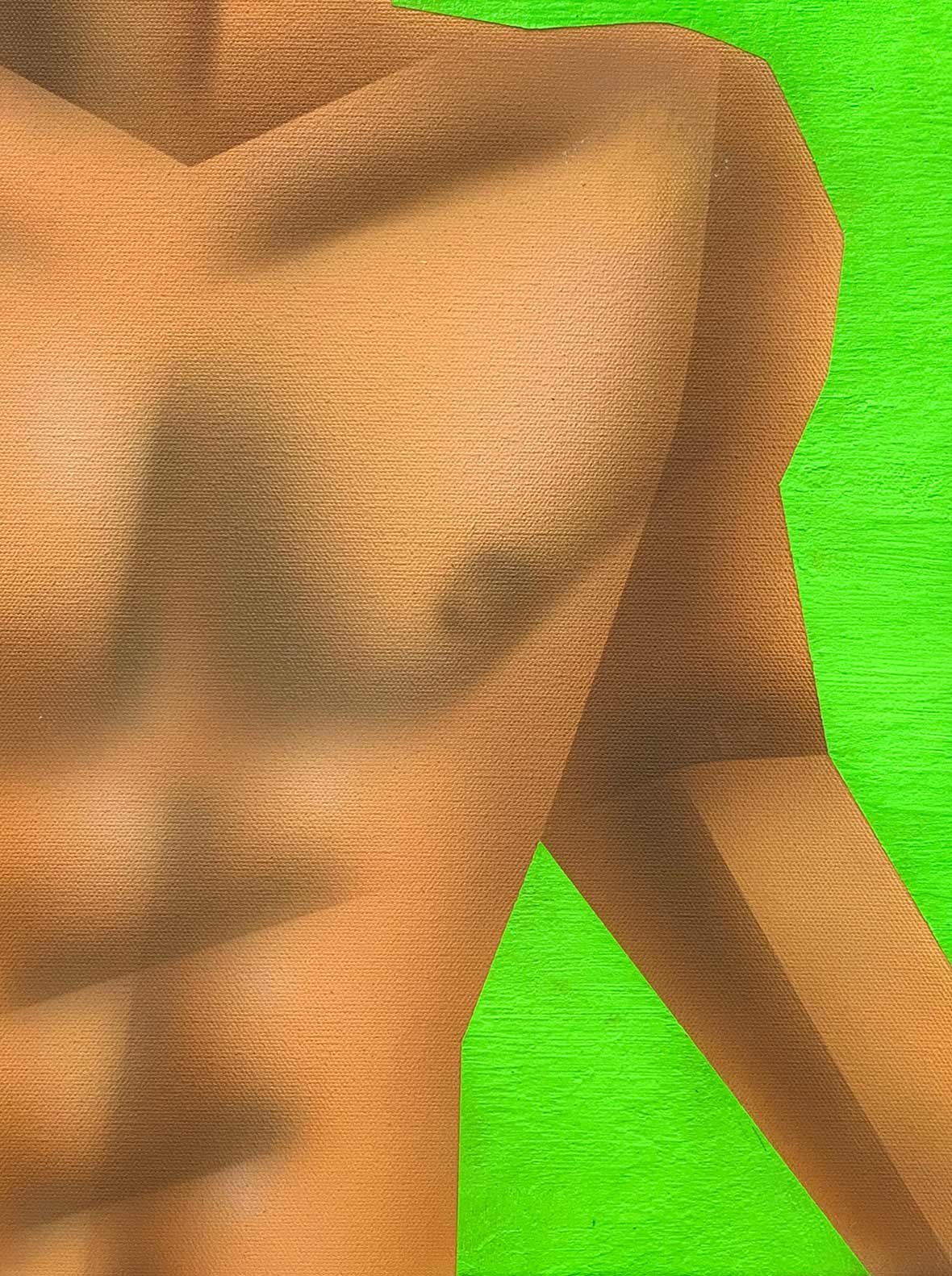
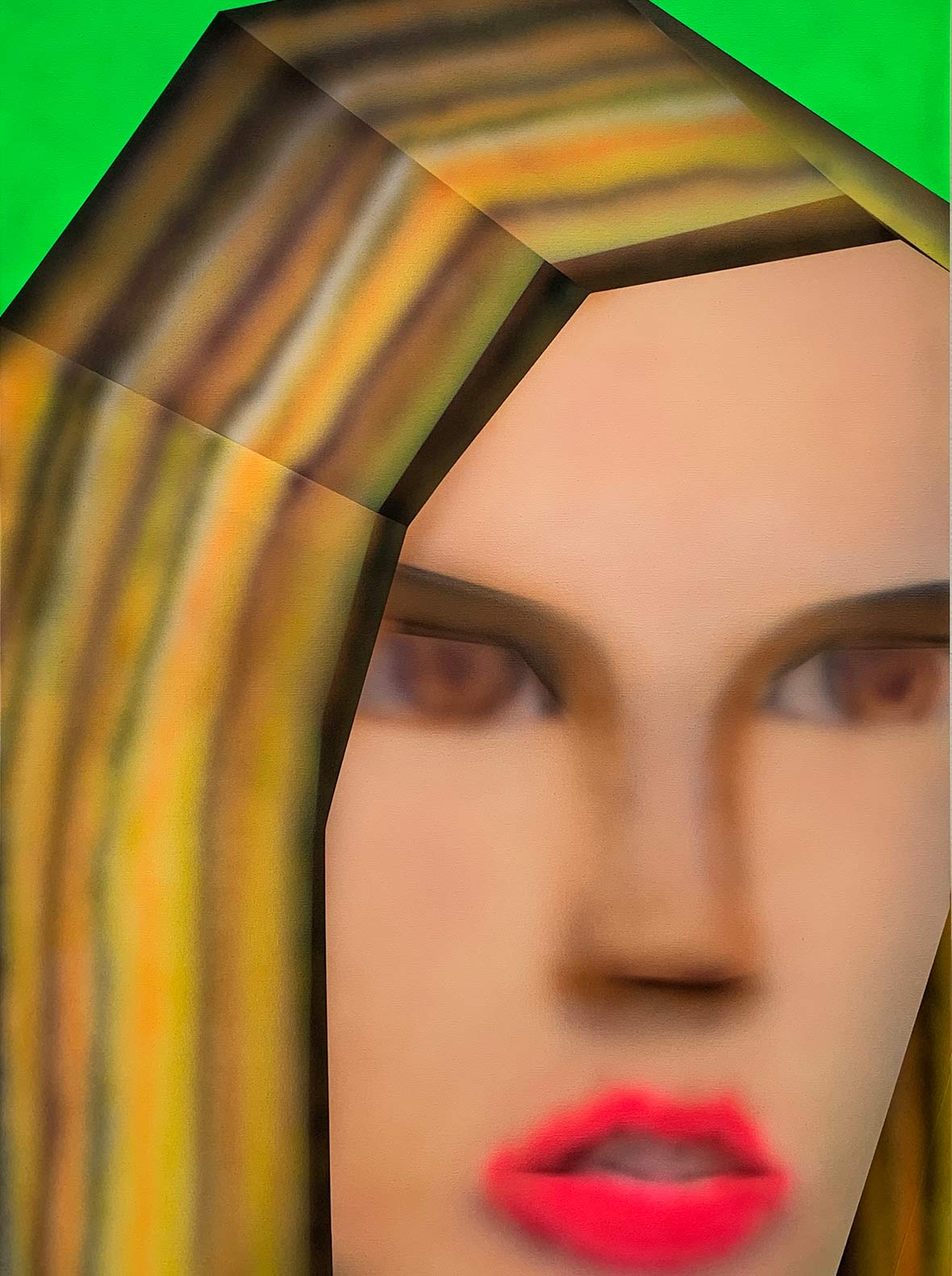
Rather than discussing differences between his motherland and his newfound home in the United States, Gao prefers focusing on their similarities. “If there is a culture that represents my generation, it is social media culture,” he says. “And it doesn’t matter where you come from or where you live—we are all in the digital world.”
Like this story? Follow neocha on Facebook and Instagram.
Website: www.gao-hang.com
Contributors: Tomas Pinheiro, Lucas Tinoco
Chinese Translation: Olivia Li
